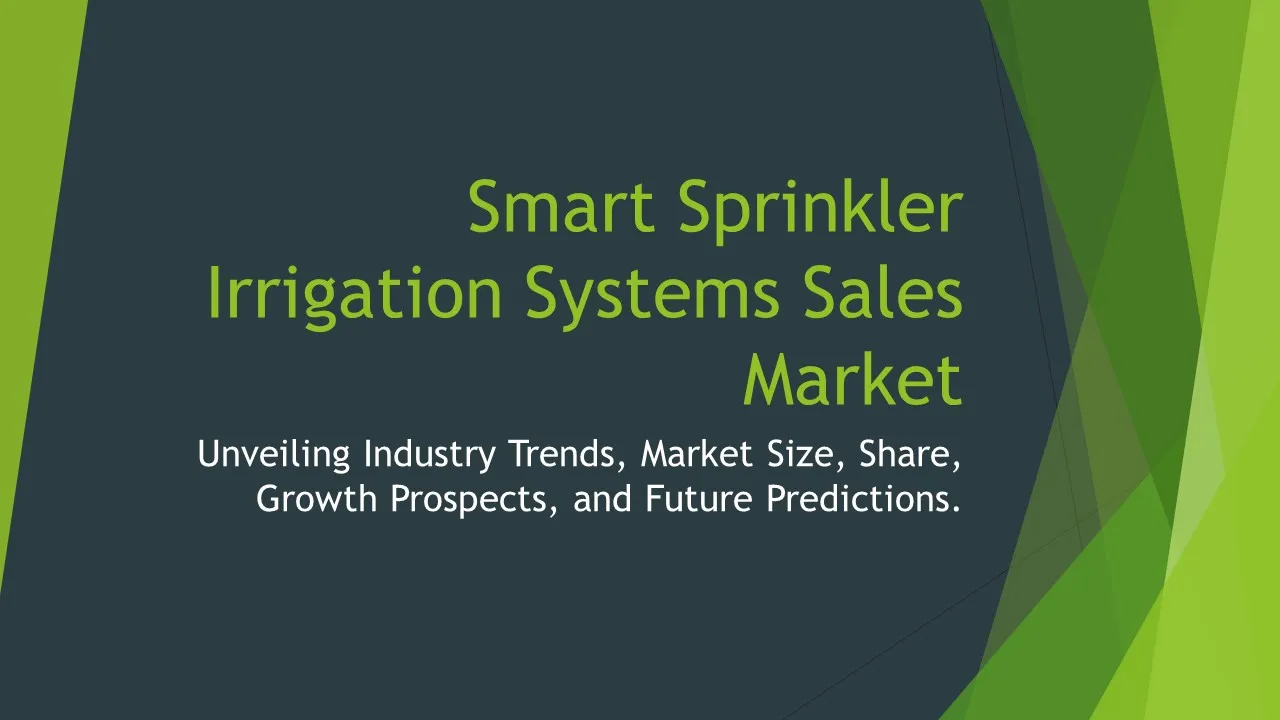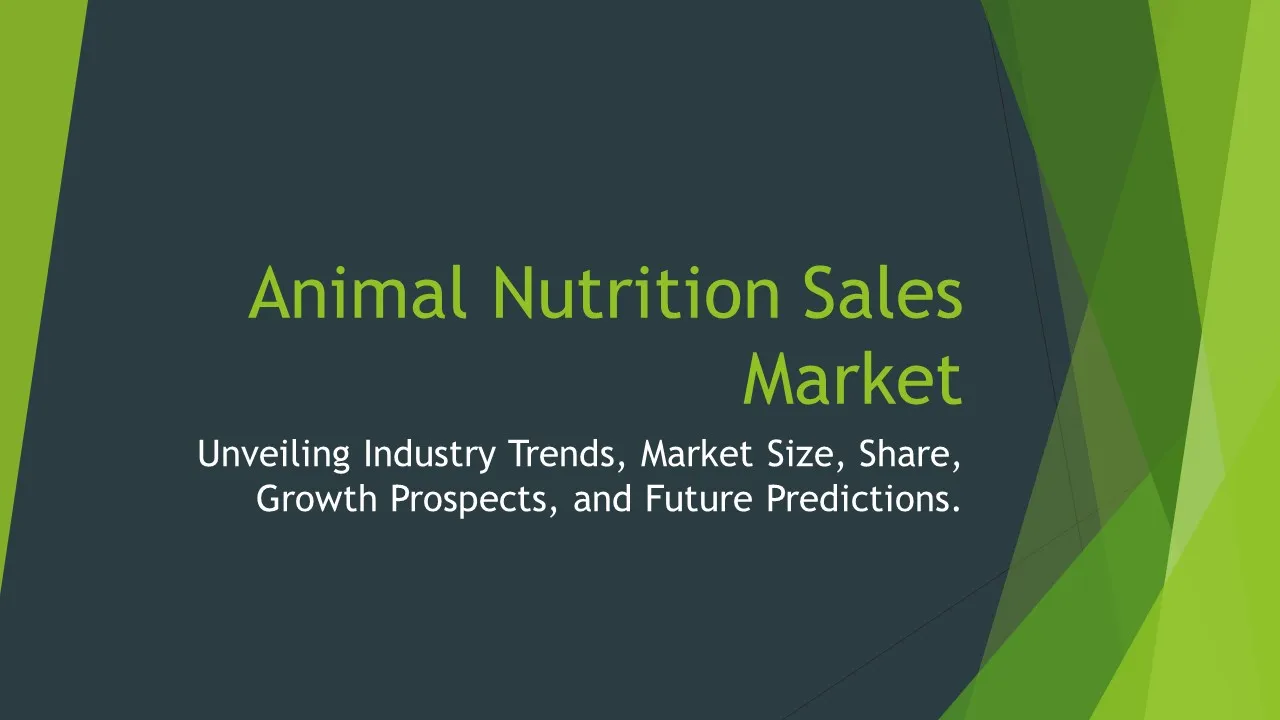Plant Growth Regulators Sales
Plant Growth Regulators Market Segments - by Product Type (Auxins, Gibberellins, Cytokinins, Ethylene, Abscisic Acid), Application (Fruits & Vegetables, Cereals & Grains, Oilseeds & Pulses, Turf & Ornamentals, Others), Distribution Channel (Online Stores, Agricultural Supply Stores, Direct Sales, Others), Ingredient Type (Synthetic, Natural), and Region (North America, Europe, Asia Pacific, Latin America, Middle East & Africa) - Global Industry Analysis, Growth, Share, Size, Trends, and Forecast 2025-2035
- Report Preview
- Table Of Content
- Segments
- Methodology
Plant Growth Regulators Sales Market Outlook
The global Plant Growth Regulators (PGR) market is projected to reach approximately USD 3.5 billion by 2035, growing at a CAGR of around 6.5% from 2025 to 2035. This growth is primarily driven by the increasing demand for high-yield crops and the rising need for sustainable agricultural practices. As the global population continues to expand, agricultural productivity must improve to meet food demands, leading to a heightened emphasis on PGRs that enhance plant growth and development. Furthermore, advancements in biotechnology and the development of innovative PGR formulations are also expected to boost the market significantly. The increasing adoption of organic farming practices and the need for environmentally friendly agricultural solutions present new avenues for market growth. Thus, the PGR market is poised for substantial expansion in the coming years, shaped by environmental considerations and the quest for agricultural efficiency.
Growth Factor of the Market
The growth of the Plant Growth Regulators market is significantly influenced by several key factors. Firstly, the increasing global population and the corresponding rise in food demand necessitate higher agricultural efficiency, which PGRs can effectively address. Secondly, advancements in agricultural technologies, including precision farming and biotechnology, have created a conducive environment for the adoption of PGRs, allowing farmers to optimize crop yields. Thirdly, the trend towards organic farming is driving the demand for natural and biodegradable PGRs, as consumers become more environmentally conscious. Furthermore, government initiatives promoting sustainable agricultural practices and research into new PGR formulations are expected to propel market growth. Lastly, the growing trend of urban gardening and small-scale farming in urban areas is also contributing to increased interest in PGRs, as city dwellers seek effective ways to grow food in limited spaces.
Key Highlights of the Market
- The global plant growth regulators market is projected to reach USD 3.5 billion by 2035, with a CAGR of 6.5% from 2025 to 2035.
- Increasing adoption of precision agriculture techniques is boosting the utilization of PGRs.
- Natural plant growth regulators are gaining traction due to rising consumer preferences for organic products.
- North America accounts for a significant share of the market, driven by advanced agricultural practices.
- Research and development in biotechnology are leading to innovative PGR formulations, enhancing market prospects.
By Product Type
Auxins:
Auxins are one of the most widely used categories of plant growth regulators, primarily known for their role in cell elongation and differentiation. These hormones are essential in regulating various physiological processes, including root initiation, branch growth, and fruit development. The increasing application of auxins in horticulture and agriculture, particularly in rooting powders and tissue culture, is driving their demand in the market. Furthermore, the growing use of auxins in commercial farming to enhance crop yields and improve the quality of fruits and vegetables is a critical factor contributing to their market share. With advancements in formulation technologies, auxins are being blended with other substances to boost efficacy and reduce environmental impact, thus further enhancing their adoption among agricultural professionals.
Gibberellins:
Gibberellins play a vital role in various growth processes, including seed germination, stem elongation, and flowering. These plant hormones are especially important in crop production, where they are used to increase fruit size and improve overall yield. The rise in demand for gibberellins is largely attributed to their effectiveness in the cultivation of crops such as grapes, rice, and barley. Additionally, the growing focus on enhancing the yield of cereal crops through the application of gibberellins is propelling their market demand. The introduction of new gibberellin formulations that offer improved stability and efficacy is also a contributing factor to their growing usage in commercial agriculture, further solidifying their position in the PGR market.
Cytokinins:
Cytokinins are another crucial class of plant growth regulators, primarily responsible for promoting cell division and growth. They play a significant role in various processes, including shoot initiation and root development. There is a growing application of cytokinins in horticulture, particularly in the production of high-quality fruits, vegetables, and ornamental plants. The trend of using cytokinins in tissue culture propagation is also on the rise, as they help in enhancing the growth of plant tissues. Moreover, the increasing interest in organic farming practices is leading to a higher demand for natural cytokinin sources, which is expected to influence market growth positively. As researchers continue to explore the potential benefits of cytokinins, their commercial applications are only set to increase in the coming years.
Ethylene:
Ethylene is a unique plant hormone that acts as a signaling molecule influencing various aspects of plant growth, particularly in fruit ripening and senescence. Its application in agriculture is particularly noteworthy for controlling the timing of harvesting and extending the shelf life of fruits and vegetables. The rising global demand for fresh produce and the necessity for effective post-harvest management solutions are propelling the use of ethylene in the market. Additionally, ethylene’s role in regulating the flowering process in various crops has also contributed to its demand. Innovations in ethylene application technologies, such as controlled atmosphere storage and selective ripening agents, are enhancing the efficacy of this PGR and contributing to its market growth.
Abscisic Acid:
Abscisic acid (ABA) is essential in regulating plant responses to environmental stress, particularly drought and salinity. The increasing prevalence of climate change and its corresponding impact on agriculture have heightened the importance of ABA in enhancing plant resilience. Farmers are increasingly utilizing ABA to improve crop tolerance to water stress and unfavorable environmental conditions, thereby boosting overall yields. Furthermore, the rising focus on sustainable agricultural practices and the need for efficient water management solutions are driving the demand for abscisic acid in the market. The development of novel ABA formulations designed for specific crops and growing conditions is expected to further enhance its market presence and effectiveness in modern agriculture.
By Application
Fruits & Vegetables:
The fruits and vegetables segment is one of the largest applications for plant growth regulators, driven by the need to enhance yield, improve quality, and extend shelf life. PGRs such as gibberellins and ethylene are widely used in the cultivation of various fruits and vegetables, enabling farmers to achieve optimal growth conditions. The increasing consumer demand for fresh and high-quality produce is propelling this segment's growth. Furthermore, the rising popularity of organic fruits and vegetables is contributing to the demand for natural PGRs, leading to a significant shift in market dynamics. As agricultural practices evolve, the application of PGRs in this sector is expected to become more sophisticated, focusing on precision and sustainability.
Cereals & Grains:
Cereals and grains represent a crucial segment of the Plant Growth Regulators market, driven by the global need for food security. PGRs play a pivotal role in enhancing crop yield, improving grain quality, and managing plant growth in cereal crops such as wheat, rice, and maize. With the increasing adoption of advanced agricultural practices and the rising prevalence of hybrid seeds, the demand for PGRs in this segment is expected to grow significantly. Additionally, the application of gibberellins and cytokinins in this segment is becoming more common as farmers seek to optimize their production processes and maximize yields. The focus on sustainable agriculture is also leading to the exploration of natural PGRs that can enhance cereal crop growth without harming the environment.
Oilseeds & Pulses:
The oilseeds and pulses segment is witnessing significant demand for plant growth regulators, primarily driven by the rising consumption of edible oils and protein-rich foods. PGRs are used to enhance growth rates and improve yield in crops such as soybeans, canola, and lentils. The increasing focus on crop rotation and diversification is also driving the application of PGRs in this segment as farmers look to boost overall agricultural output. Furthermore, the need to increase the efficiency of oilseed production in light of global demand is propelling the adoption of PGRs. The continuous development of new formulations tailored to specific oilseed and pulse crops is expected to enhance growth in this market segment significantly.
Turf & Ornamentals:
The turf and ornamentals segment is increasingly utilizing plant growth regulators to maintain the aesthetic quality and health of lawns, gardens, and landscaping areas. PGRs such as cytokinins and auxins play a crucial role in managing growth patterns, enhancing color, and optimizing flowering in ornamental plants. As urbanization increases, the demand for well-maintained public and private green spaces is driving the market for PGRs in this sector. Additionally, the growing trend of using PGRs in golf courses and sports fields to improve turf quality is contributing to market growth. With an increasing focus on sustainable landscaping practices, the demand for natural PGRs in this segment is also expected to rise, further shaping market dynamics.
Others:
The "Others" segment encompasses various smaller applications of plant growth regulators in different agricultural practices. This includes niche crops, specialty horticulture, and greenhouse applications that may not fall under the primary categories. As farmers seek innovative solutions to enhance crop productivity and quality across various agricultural settings, the demand for PGRs in these areas is likely to increase. The growing awareness of the benefits of PGRs among specialized growers and the introduction of new formulations tailored for specific plant needs are driving growth in this segment. Additionally, as research continues to identify new applications for PGRs, this segment is expected to expand, contributing to the overall market growth.
By Distribution Channel
Online Stores:
The online distribution channel for plant growth regulators has gained significant traction in recent years, driven by the rising trend of e-commerce globally. Farmers and agricultural professionals increasingly prefer online shopping for PGRs due to the convenience and access to a wider range of products. Online platforms often provide detailed product information, customer reviews, and competitive pricing, making it easier for users to make informed purchasing decisions. The addition of direct-to-consumer shipping and tailored marketing strategies by e-commerce platforms is further enhancing this segment's attractiveness. The COVID-19 pandemic has also accelerated the shift towards online shopping, as more consumers and businesses embrace digital solutions for their agricultural needs.
Agricultural Supply Stores:
Agricultural supply stores remain a traditional and vital distribution channel for plant growth regulators. These stores typically provide a comprehensive range of agricultural inputs, including fertilizers, pesticides, and PGRs, allowing farmers to purchase all necessary materials in one location. The personalized service and expert advice available from store staff are significant advantages that attract customers. Additionally, local supply stores often cater specifically to regional agricultural practices and preferences, ensuring that farmers can find products that suit their specific needs. As farming communities continue to rely on these trusted outlets for their agricultural supplies, the agricultural supply store channel will continue to play a crucial role in the distribution of PGRs.
Direct Sales:
Direct sales, often facilitated by agricultural representatives or company sales teams, are an important channel for plant growth regulators, particularly for larger agricultural enterprises. This approach allows companies to build strong relationships with farmers, providing tailored solutions based on specific crop needs and farming conditions. The personal interaction and technical support provided through direct sales enhance customer trust and satisfaction, which is vital in the agricultural sector. Furthermore, as companies focus on providing comprehensive agronomic support and education to their clients, the direct sales channel is likely to see increased activity. The growing trend of personalized service and consultation in agriculture will significantly boost this distribution channel in the PGR market.
Others:
The "Others" category encompasses various alternative distribution methods for plant growth regulators, including telemarketing and wholesale distribution channels. While these methods may not be as prevalent as the primary channels, they cater to specific markets and customer preferences. Some farmers may prefer telemarketing as a means to quickly access product information and place orders, while wholesalers can facilitate bulk purchasing for larger agricultural operations. Additionally, partnerships between PGR manufacturers and agricultural cooperatives can enhance product distribution in rural areas. As the market evolves, these alternative distribution channels are expected to play a role in complementing the more traditional retail methods, ensuring that PGRs are accessible to a diverse range of customers.
By Ingredient Type
Synthetic:
Synthetic plant growth regulators are widely used in modern agriculture due to their efficacy and ability to produce specific growth outcomes. These compounds can be precisely formulated to target particular physiological processes within plants, making them highly effective in enhancing crop yields and quality. The increasing reliance on synthetic PGRs is driven by the demand for high-efficiency agricultural inputs that can facilitate better growth under varying environmental conditions. However, there is a growing concern regarding the potential environmental impacts of synthetic chemicals, leading to increased scrutiny and regulatory oversight. Nevertheless, the continued development of advanced synthetic formulations that minimize environmental harm while maximizing effectiveness is expected to sustain the demand for this ingredient type in the market.
Natural:
Natural plant growth regulators are gaining popularity due to the rising consumer demand for organic and sustainable agricultural practices. These PGRs, derived from plant extracts and natural sources, offer an eco-friendly alternative to synthetic options, appealing to environmentally conscious farmers and consumers. The increasing focus on organic farming methods and the need for biodegradable solutions are driving the demand for natural PGRs. Additionally, research and innovation into extracting and formulating natural growth regulators are expanding their applications across various crops. As more agricultural stakeholders recognize the benefits of natural PGRs in enhancing plant growth while minimizing environmental impact, the market for this ingredient type is expected to grow significantly in the coming years.
By Region
The North American region holds a significant share of the global Plant Growth Regulators market, attributed to the advanced agricultural practices and high adoption rates of technology in farming. The market is projected to grow at a CAGR of around 6.2% during the forecast period, driven by the increasing demand for high-yield crops and the adoption of sustainable agricultural practices. The presence of major agricultural companies and research institutions in the region supports the development and distribution of innovative PGR products. Additionally, the growing interest in organic farming is influencing market dynamics, leading to an increased demand for natural PGRs. With a mix of innovative agricultural practices and a strong regulatory framework, North America is expected to continue playing a significant role in the PGR market.
In Europe, the Plant Growth Regulators market is also experiencing robust growth, particularly due to the stringent regulations surrounding agricultural inputs and the emphasis on sustainable farming practices. Countries such as Germany, France, and the Netherlands are leading the way in adopting advanced PGR technologies to enhance crop production. The European region is witnessing a shift towards organic farming, prompting farmers to explore natural PGR options extensively. With the increasing focus on reducing chemical residues in food products and promoting environmentally friendly farming practices, the demand for both synthetic and natural PGRs is expected to grow significantly in Europe, further contributing to the market's overall expansion.
Opportunities
The Plant Growth Regulators market presents numerous opportunities for growth, particularly in response to the evolving agricultural landscape. One of the key opportunities lies in the expansion of organic farming practices, which is driving demand for natural and biodegradable PGRs. As consumers increasingly seek organic produce and sustainable farming methods, manufacturers are incentivized to innovate and develop natural PGR formulations that align with these preferences. This trend is not only beneficial for the environment but also presents a lucrative market for companies willing to invest in research and development of sustainable products. Additionally, the integration of technology into agriculture, including precision farming techniques, offers opportunities for PGR manufacturers to create specialized products that cater to specific crop needs and optimize agricultural efficiency.
Moreover, the growing focus on food security and the need to improve crop yields amid climate change challenges provide fertile ground for the PGR market. Governments and agricultural organizations are increasingly investing in research initiatives aimed at developing advanced agricultural solutions that can withstand extreme weather conditions. This presents an opportunity for PGR manufacturers to collaborate with research institutions and agricultural experts to create tailored solutions that enhance plant resilience and productivity. Furthermore, emerging markets in Asia-Pacific and Latin America represent significant growth opportunities as these regions continue to modernize their agricultural practices and adopt advanced technologies, leading to an increased demand for plant growth regulators.
Threats
While the Plant Growth Regulators market presents growth opportunities, it also faces several threats that could potentially impact its expansion. One major threat is the growing concern over the environmental and health effects of synthetic chemicals used in agriculture. Increased scrutiny from regulatory bodies and a shift in consumer preferences towards organic and natural products are prompting a reevaluation of the use of synthetic PGRs. As a result, companies may face challenges in adapting to these changing regulations and consumer demands, which could affect their market position and profitability. Additionally, the potential for negative public perceptions regarding the use of agricultural chemicals may lead to decreased demand for certain PGR products, posing a significant hurdle for manufacturers in the industry.
Another threat to the market is the potential for crop resistance to certain PGRs, which can lead to diminished effectiveness over time. As farmers increasingly rely on specific growth regulators to enhance yields, there is a risk that pests and diseases may adapt, undermining the benefits of these products. This phenomenon can lead to increased costs for farmers as they may need to switch to alternative products or invest in additional measures to combat resistance. Moreover, competition from alternative agricultural methods and products, such as biopesticides and organic fertilizers, may pose a significant challenge to the PGR market, as consumers may opt for these alternatives in pursuit of more sustainable and eco-friendly farming practices.
Competitor Outlook
- Syngenta AG
- BASF SE
- Bayer AG
- Corteva Agriscience
- FMC Corporation
- UPL Limited
- Valent Biosciences LLC
- Nufarm Limited
- Adama Agricultural Solutions Ltd.
- Arysta LifeScience Corporation
- Greenhouse Growth Technologies
- Plant Health Care plc
- BioWorks, Inc.
- Certis USA LLC
- Agrochemicals International
The competitive landscape of the Plant Growth Regulators market is characterized by a mix of established players and emerging companies, all vying for market share amid a rapidly evolving agricultural landscape. Major players such as Syngenta, BASF, and Bayer dominate the market due to their extensive product portfolios, robust research and development capabilities, and established distribution networks. These companies continually invest in innovative formulations and technologies to improve the efficacy and environmental profile of their products, ensuring they meet the changing demands of farmers and consumers. Additionally, partnerships and collaborations with research institutions and agricultural organizations are common strategies among these key players, enabling them to leverage expertise and resources in developing cutting-edge PGR solutions.
In addition to the major players, numerous smaller and regional companies are gaining traction in the Plant Growth Regulators market by focusing on niche products and sustainable solutions. Companies like BioWorks and Plant Health Care are emphasizing the development of natural and biopesticide-based growth regulators, catering to the growing demand for organic farming inputs. These smaller firms often capitalize on emerging trends and consumer preferences for environmentally friendly products, positioning themselves as viable alternatives to traditional chemical PGRs. As the market continues to evolve, these companies are expected to play a significant role in shaping the future of plant growth regulation, driving innovation, and providing farmers with a wider range of options to enhance crop productivity.
Key companies such as Corteva Agriscience and FMC Corporation are actively expanding their product offerings through acquisitions, collaborations, and strategic partnerships. This strategic approach enables them to diversify their portfolios and strengthen their market positions in the increasingly competitive PGR landscape. Furthermore, the adoption of technology and data-driven agriculture is influencing the competitive dynamics, as companies that incorporate precision agriculture solutions into their offerings are likely to gain a competitive edge. The continuous evolution of agricultural practices and the increasing emphasis on sustainability will undoubtedly shape the competitive landscape of the Plant Growth Regulators market in the years to come.
1 Appendix
- 1.1 List of Tables
- 1.2 List of Figures
2 Introduction
- 2.1 Market Definition
- 2.2 Scope of the Report
- 2.3 Study Assumptions
- 2.4 Base Currency & Forecast Periods
3 Market Dynamics
- 3.1 Market Growth Factors
- 3.2 Economic & Global Events
- 3.3 Innovation Trends
- 3.4 Supply Chain Analysis
4 Consumer Behavior
- 4.1 Market Trends
- 4.2 Pricing Analysis
- 4.3 Buyer Insights
5 Key Player Profiles
- 5.1 BASF SE
- 5.1.1 Business Overview
- 5.1.2 Products & Services
- 5.1.3 Financials
- 5.1.4 Recent Developments
- 5.1.5 SWOT Analysis
- 5.2 Bayer AG
- 5.2.1 Business Overview
- 5.2.2 Products & Services
- 5.2.3 Financials
- 5.2.4 Recent Developments
- 5.2.5 SWOT Analysis
- 5.3 Syngenta AG
- 5.3.1 Business Overview
- 5.3.2 Products & Services
- 5.3.3 Financials
- 5.3.4 Recent Developments
- 5.3.5 SWOT Analysis
- 5.4 UPL Limited
- 5.4.1 Business Overview
- 5.4.2 Products & Services
- 5.4.3 Financials
- 5.4.4 Recent Developments
- 5.4.5 SWOT Analysis
- 5.5 BioWorks, Inc.
- 5.5.1 Business Overview
- 5.5.2 Products & Services
- 5.5.3 Financials
- 5.5.4 Recent Developments
- 5.5.5 SWOT Analysis
- 5.6 Certis USA LLC
- 5.6.1 Business Overview
- 5.6.2 Products & Services
- 5.6.3 Financials
- 5.6.4 Recent Developments
- 5.6.5 SWOT Analysis
- 5.7 Nufarm Limited
- 5.7.1 Business Overview
- 5.7.2 Products & Services
- 5.7.3 Financials
- 5.7.4 Recent Developments
- 5.7.5 SWOT Analysis
- 5.8 FMC Corporation
- 5.8.1 Business Overview
- 5.8.2 Products & Services
- 5.8.3 Financials
- 5.8.4 Recent Developments
- 5.8.5 SWOT Analysis
- 5.9 Corteva Agriscience
- 5.9.1 Business Overview
- 5.9.2 Products & Services
- 5.9.3 Financials
- 5.9.4 Recent Developments
- 5.9.5 SWOT Analysis
- 5.10 Plant Health Care plc
- 5.10.1 Business Overview
- 5.10.2 Products & Services
- 5.10.3 Financials
- 5.10.4 Recent Developments
- 5.10.5 SWOT Analysis
- 5.11 Valent Biosciences LLC
- 5.11.1 Business Overview
- 5.11.2 Products & Services
- 5.11.3 Financials
- 5.11.4 Recent Developments
- 5.11.5 SWOT Analysis
- 5.12 Agrochemicals International
- 5.12.1 Business Overview
- 5.12.2 Products & Services
- 5.12.3 Financials
- 5.12.4 Recent Developments
- 5.12.5 SWOT Analysis
- 5.13 Arysta LifeScience Corporation
- 5.13.1 Business Overview
- 5.13.2 Products & Services
- 5.13.3 Financials
- 5.13.4 Recent Developments
- 5.13.5 SWOT Analysis
- 5.14 Greenhouse Growth Technologies
- 5.14.1 Business Overview
- 5.14.2 Products & Services
- 5.14.3 Financials
- 5.14.4 Recent Developments
- 5.14.5 SWOT Analysis
- 5.15 Adama Agricultural Solutions Ltd.
- 5.15.1 Business Overview
- 5.15.2 Products & Services
- 5.15.3 Financials
- 5.15.4 Recent Developments
- 5.15.5 SWOT Analysis
- 5.1 BASF SE
6 Market Segmentation
- 6.1 Plant Growth Regulators Sales Market, By Application
- 6.1.1 Fruits & Vegetables
- 6.1.2 Cereals & Grains
- 6.1.3 Oilseeds & Pulses
- 6.1.4 Turf & Ornamentals
- 6.1.5 Others
- 6.2 Plant Growth Regulators Sales Market, By Product Type
- 6.2.1 Auxins
- 6.2.2 Gibberellins
- 6.2.3 Cytokinins
- 6.2.4 Ethylene
- 6.2.5 Abscisic Acid
- 6.3 Plant Growth Regulators Sales Market, By Ingredient Type
- 6.3.1 Synthetic
- 6.3.2 Natural
- 6.4 Plant Growth Regulators Sales Market, By Distribution Channel
- 6.4.1 Online Stores
- 6.4.2 Agricultural Supply Stores
- 6.4.3 Direct Sales
- 6.4.4 Others
- 6.1 Plant Growth Regulators Sales Market, By Application
7 Competitive Analysis
- 7.1 Key Player Comparison
- 7.2 Market Share Analysis
- 7.3 Investment Trends
- 7.4 SWOT Analysis
8 Research Methodology
- 8.1 Analysis Design
- 8.2 Research Phases
- 8.3 Study Timeline
9 Future Market Outlook
- 9.1 Growth Forecast
- 9.2 Market Evolution
10 Geographical Overview
- 10.1 Europe - Market Analysis
- 10.1.1 By Country
- 10.1.1.1 UK
- 10.1.1.2 France
- 10.1.1.3 Germany
- 10.1.1.4 Spain
- 10.1.1.5 Italy
- 10.1.1 By Country
- 10.2 Asia Pacific - Market Analysis
- 10.2.1 By Country
- 10.2.1.1 India
- 10.2.1.2 China
- 10.2.1.3 Japan
- 10.2.1.4 South Korea
- 10.2.1 By Country
- 10.3 Latin America - Market Analysis
- 10.3.1 By Country
- 10.3.1.1 Brazil
- 10.3.1.2 Argentina
- 10.3.1.3 Mexico
- 10.3.1 By Country
- 10.4 North America - Market Analysis
- 10.4.1 By Country
- 10.4.1.1 USA
- 10.4.1.2 Canada
- 10.4.1 By Country
- 10.5 Middle East & Africa - Market Analysis
- 10.5.1 By Country
- 10.5.1.1 Middle East
- 10.5.1.2 Africa
- 10.5.1 By Country
- 10.6 Plant Growth Regulators Sales Market by Region
- 10.1 Europe - Market Analysis
11 Global Economic Factors
- 11.1 Inflation Impact
- 11.2 Trade Policies
12 Technology & Innovation
- 12.1 Emerging Technologies
- 12.2 AI & Digital Trends
- 12.3 Patent Research
13 Investment & Market Growth
- 13.1 Funding Trends
- 13.2 Future Market Projections
14 Market Overview & Key Insights
- 14.1 Executive Summary
- 14.2 Key Trends
- 14.3 Market Challenges
- 14.4 Regulatory Landscape
Segments Analyzed in the Report
The global Plant Growth Regulators Sales market is categorized based on
By Product Type
- Auxins
- Gibberellins
- Cytokinins
- Ethylene
- Abscisic Acid
By Application
- Fruits & Vegetables
- Cereals & Grains
- Oilseeds & Pulses
- Turf & Ornamentals
- Others
By Distribution Channel
- Online Stores
- Agricultural Supply Stores
- Direct Sales
- Others
By Ingredient Type
- Synthetic
- Natural
By Region
- North America
- Europe
- Asia Pacific
- Latin America
- Middle East & Africa
Key Players
- Syngenta AG
- BASF SE
- Bayer AG
- Corteva Agriscience
- FMC Corporation
- UPL Limited
- Valent Biosciences LLC
- Nufarm Limited
- Adama Agricultural Solutions Ltd.
- Arysta LifeScience Corporation
- Greenhouse Growth Technologies
- Plant Health Care plc
- BioWorks, Inc.
- Certis USA LLC
- Agrochemicals International
- Publish Date : Jan 20 ,2025
- Report ID : AG-521
- No. Of Pages : 100
- Format : |
- Ratings : 4.5 (110 Reviews)









